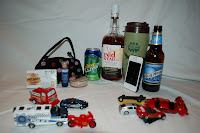What is installation art? This is a space that is presented as a work of art that can be entered, explored, experienced, and reflected upon. (page 47) Installation art is a unique way to represent an idea that may seem to stand out and many not even have an explanation for viewers. This is something that they can easily reflect on and leaving their imagination wanting more.
What materials are used installation art?
The materials that are used include specifics to the artist themselves. It depends on what they would like to display. For example, on page 47, Ann Hamilton’s “mantle” used the following materials: eight tables, eleven shortwave radio receivers, voice, chair, figure, steel block, sewing implements, 33 wool coats, and approx. 60,000 fresh-cut flowers. It is up to the artist representing their idea in the space allotted.
Why make installation art?
This is a freedom of expression by using any and all materials that interest the artist. I believe that this makes it interesting by how tactile a piece of work can appear. It is as though you should reach out and touch the material because you are so intrigued by its design.
Which artist/installation did I find most interesting?
Ann Hamilton’s “mantle” is honestly my favorite installation. The beauty of the fresh-cut flowers is what made me so interested in the picture. My imagination helps me to “smell” the flowers and want to experience the space that was created.
From the material reviewed, is there a inspiration piece that I feel a connection with?
I honestly wanted to think of something different other than reflecting on specific examples. Although I do have to say that I was inspired to create an installation art that left the viewer thinking and realizing the meaning of my message. I want people to know some of the many distractions of driving and know the consequences that can occur.
What theme do I want to explore in my installation?
I would say that I somewhat focused on the environment and people surrounded by influence of others. People will learn from others through the actions that they make on an everyday basis. In my installation art, I am hoping to teach a lesson that is truly important to our society as a whole.
What materials will I use?
The materials that I used included my son’s matchbox cars, bottle of whiskey and beer, coffee mug, pop can, coupon representing fast food, make-up, cell phone and white sheet.
Where will this installation be located and why?

This installation will be placed in a high school on display. I want young adults to realize the importance of always focusing on the road when driving. If I start with this audience, I believe that the message will be communicated throughout not only the students peers but their parents and so forth.
 What are your thoughts on the planning and creation of a site specific installation?
What are your thoughts on the planning and creation of a site specific installation?

Planning and creating a site specific installation takes time and consideration. This actually took me a few days to figure out what I wanted to do. Once I did this, I gathered my materials and got to work on designing my art. I thought that it would be a great idea to represent some distractions while driving in the back of the “scene of the accident.” This is somewhat of a reminder of what could happen if people do not keep their eyes on the road. I wanted my installation to show importance and inspiration. Installation art is a great way to express ideas that may actually influence someone in the future.
Artist: Emily Hassler
Title of work: Distractions and Consequences
Media: matchbox cars, bottle of whiskey and beer, coffee mug, pop can, coupon representing fast food, make-up, cell phone and white sheet.
Date: October 7th, 2012
Size: 12in X 24in
 Source of picture (URL):
Source of picture (URL): http://artexplorations2012.blogspot.com/
Description – Describe what you see. (subject matter)?
In the background you will notice many distractions (alcohol, make-up etc) that have led people to crash their vehicles, as displayed in the forefront. The everyday distractions cause serious accidents and sometimes even death.There are also rescue vehicles that help at the scene.
Formal analysis – (form) What principles and elements were used and how are they used?
I used balance and line which is represented by both the distractions and crash. The overall picture taken displays this the best. Variety is also shown for the many different items in the photo. All of which are presented in ways that bring out the importance of the works meaning.




